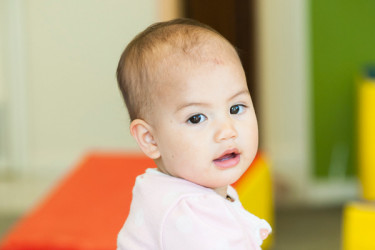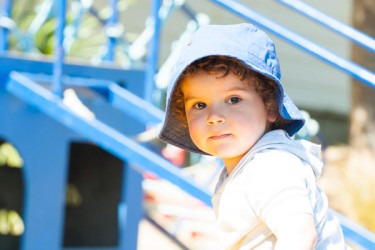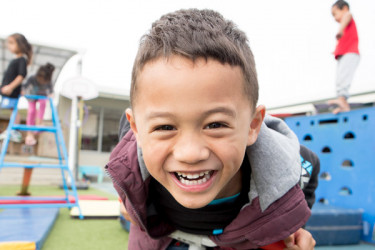Mana aotūroa | Exploration
Strand 5
This section is from pages 46–50 of Te Whāriki: He whāriki mātauranga mō ngā mokopuna o Aotearoa Early childhood curriculum. This resource is part of the “Te Whāriki strands and principles” set. See the resource carousel below for more.

Ko te whakatipuranga tēnei o te mana rangahau, me ngā mātauranga katoa e pā ana ki te aotūroa me te taiao.
The child learns through active exploration of the environment.
This strand is about supporting infants, toddlers, and young children to explore, learn from, respect, and make sense of the world. Their exploration involves all aspects of the environment: natural, social, physical, spiritual, and human-made.
Children learn through play: by doing, asking questions, interacting with others, devising theories about how things work and then trying them out and by making purposeful use of resources. As they engage in exploration, they begin to develop attitudes and expectations that will continue to influence their learning throughout life.
Diverse ways of being and knowing frame the way respect for the environment is demonstrated. Kaiako develop understandings of how children and their whānau make sense of the world and respect and appreciate the natural environment. Children may express their respect for the natural world in terms of respect for Papatūānuku, Ranginui and atua Māori. Kaitiakitanga is integral to this.
For Pasifika children, the skills and knowledge that reside in elders, families, and community provide the foundation for their independent explorations.
- Mana aotūroa | Ko te whakatipuranga tēnei o te mana rangahau, me ngā mātauranga katoa e pā ana ki te aotūroa me te taiao| Mokopuna see themselves as explorers, able to connect with and care for their own and wider worlds.
- Exploration | Children are critical thinkers, problem solvers and explorers
GOALS Children experience an environment where: |
LEARNING OUTCOMES Over time and with guidance and encouragement, children become increasingly capable of: |
EVIDENCE OF LEARNING AND DEVELOPMENT These outcomes will be observed as learning in progress when, for example, children demonstrate: |
|---|---|---|
Their play is valued as meaningful learning and the importance of spontaneous play is recognised |
Te whakaaro me te tūhurahura i te pūtaiao | Playing, imagining, inventing and experimenting |
|
They gain confidence in and control of their bodies |
Te wero ā-tinana | Moving confidently and challenging themselves physically |
|
They learn strategies for active exploration, thinking and reasoning |
Te hīraurau hopanga | Using a range of strategies for reasoning and problem solving |
|
They develop working theories for making sense of the natural, social, physical and material worlds |
Te rangahau me te mātauranga | Making sense of their worlds by generating and refining working theories |
|
See Materials that come with this resource to download Te Whāriki Early childhood curriculum: Mana aotūroa | Exploration – Strand 5 (.pdf).
Examples of practices that promote these learning outcomes
Kaiako are aware of the history of Māori exploration and navigation. They encourage mokopuna to connect to this legacy by providing safe and challenging environments and experiences.
Kaiako recognise the relationship mokopuna have with the environment. They support them to fulfil their responsibilities as kaitiaki of the environment. For example, kaiako encourage mokopuna to observe nature without harming it.
- Infants
- Toddlers
- Young children
- Considerations for leadership, organisation, and practice
- Questions for reflection

- Everything in the immediate environment is chosen for its potential as a learning resource. Kaiako provide open-ended and sensory-rich resources for infants to explore.
- Kaiako respect infants’ motor progression and allow their physical development to unfold naturally at their own pace. Safe and stimulating objects and furnishings are provided for infants to move, hold on to, balance against, or pull themselves up on.
- Infants have a variety of sensory experiences including fresh air and a range of smells, temperatures and sounds. They experience different indoor and outdoor play spaces, such as smooth floors, carpet, grass and sand.
- Consideration is given to the aesthetic and sensory environment, ensuring that it includes pleasing contrasts in light, colour, design, sound, taste and smell.
- Infants have opportunities to observe and play with, and alongside, other children and adults.
Kua kite rānei koe?
About this resource
This section from pages 46–50 of Te Whāriki: He whāriki mātauranga mō ngā mokopuna o Aotearoa Early childhood curriculum discusses the Mana aotūroa | Exploration strand, examples of practices that promote the learning outcomes under this strand for infants, toddlers and young children, and provides considerations for leadership, organisation and practice. This resource is part of the “Te Whāriki strands and principles” set. See the resource carousel for more.











